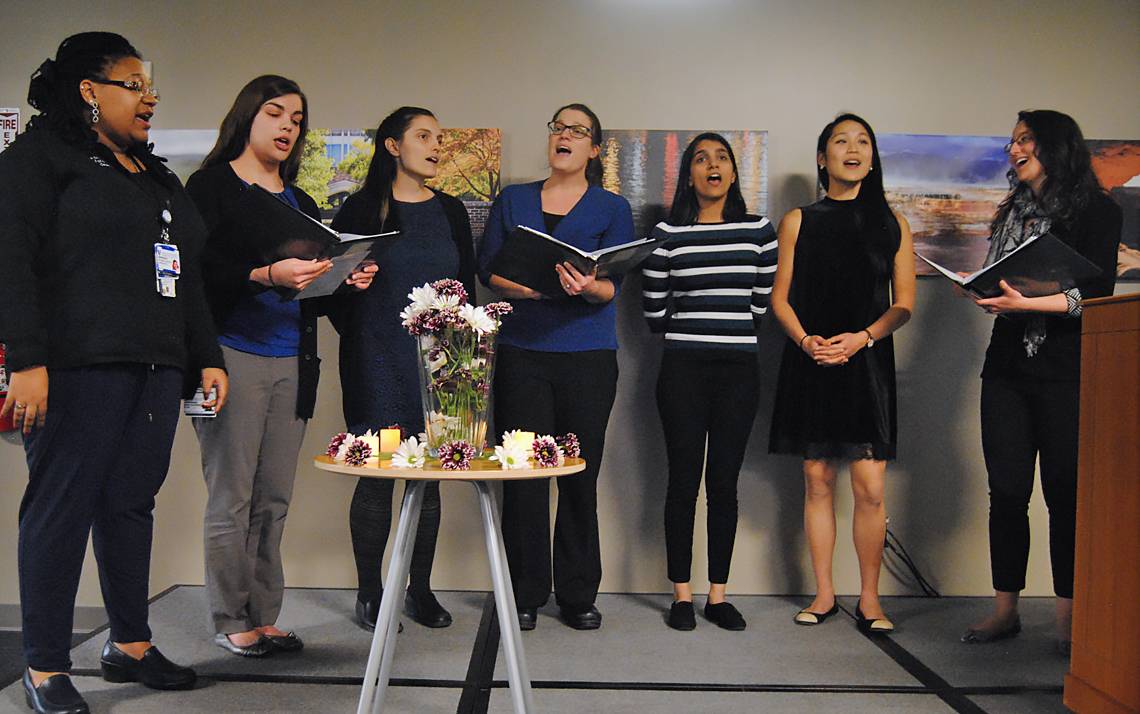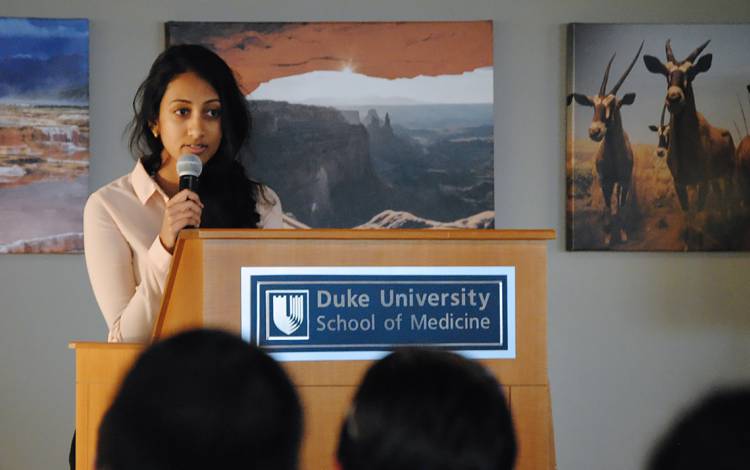A Lasting Gift
Donors to Duke’s Anatomical Gifts Program inspire future physicians

During her first semester as a Duke University School of Medicine student, Aardra Rajendran had experiences she’d never forget.
Three afternoons a week, she and her classmates crowded around tables in Duke’s Gross Anatomy Lab and dissected human bodies, taking apart each organ system, holding what they’d previously only known through diagrams.
“You learn so much,” Rajendran said. “It’s so powerful because you realize that this is going to stick with you for the rest of your career.”
 Ensuring these essential experiences is the job of Duke’s Anatomical Gifts Program, which supplies bodies to Duke’s School of Medicine for use in the advancement of medical knowledge. The roughly 130 donations Duke receives each year are used in either the Gross Anatomy Lab, where anatomy is reviewed in detail, or the Duke Human Fresh Tissue Lab, where residents, attending physicians and medical students perform advanced surgical training on fresh tissue or work to develop new medical or surgical procedures. Once training is complete, the body is cremated, and families can choose to have ashes returned or scattered in Duke Forest.
Ensuring these essential experiences is the job of Duke’s Anatomical Gifts Program, which supplies bodies to Duke’s School of Medicine for use in the advancement of medical knowledge. The roughly 130 donations Duke receives each year are used in either the Gross Anatomy Lab, where anatomy is reviewed in detail, or the Duke Human Fresh Tissue Lab, where residents, attending physicians and medical students perform advanced surgical training on fresh tissue or work to develop new medical or surgical procedures. Once training is complete, the body is cremated, and families can choose to have ashes returned or scattered in Duke Forest.
From her office in Duke South, Nancy Cotton, the program’s coordinator, receives calls from families who inquire how they can donate bodies of their loved ones.
“Most of them call because they’ve received care here at one time in their life,” Cotton said. “It could have been over 20 years ago, but Duke has stuck with them and they want to give back.”
After a patient’s death, arrangements for donations begin. Only then, through speaking with doctors, can Cotton determine whether a body meets Duke’s requirements for donation. The criteria, which focuses primarily on the body’s condition, ensures donations will be suitable for education. Cotton escorts each body when it arrives, staying in contact with families throughout the process.
“This is an honorable thing they’ve done,” said Cotton, who’s been with the program for nine years.
Each June, there’s a memorial service for donors in Duke University Chapel, where donor families are invited. A list of the donors’ names is read. This spring, Rajendran and her School of Medicine classmates held their own memorial service as a show of thanks to donors and families.
“You’ve known this body so intimately over the course of the semester, and yet you know nothing about this person whose hand you’ve held, whose heart you’ve touched,” Rajendran said. “You just have real gratitude because this was the biggest gift somebody could ever give you. It was their life, and they’ve given that to you. The biggest thing we can do is take that knowledge, put it to good use and take good care of the patients we’ll see in the future.”
Have a story idea or news to share? Share it with Working@Duke.